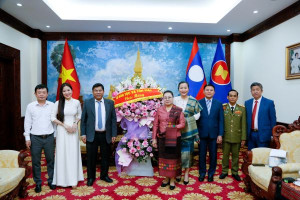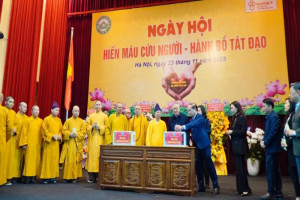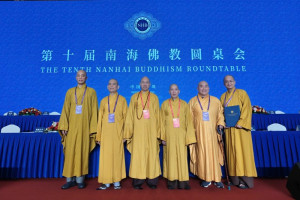
Pho Phuoc and Tu Te pagodas in Bangkok, two long-standing pagodas of Vietnamese people in Thailand, were fitted with plates bearing their Vietnamese names on August 21st.
Tu Te pagoda is the place President Ho Chi Minh did revolutionary activities in the Kingdom of Thailand in the early 20th century. While Pho Phuoc pagoda is home to the headquarters of Annamnikaya, a Vietnam’s Buddhist sect in Thailand.
So far, there are seven pagodas, among more than 20 Vietnamese pagodas in Thailand, having been fitted with their Vietnamese nameplates.
During an official visit to Thailand in mid August 2016, Deputy Prime Minister Vũ Đức Đam and Bangkok Governor Sukhumbhand Paribatra attached Vietnamese nameplates to Khanh Van pagoda, which was built by Vietnamese migrants in the late 18th century. It is expected that in the coming time, other Vietnamese pagodas in Thailand will also have Vietnamese nameplates.
As soon as Vietnamese people arrived in Thailand about 200 years ago, the first Vietnamese pagodas were built. Since then, Annamnikaya has become one of the sects respected in the Buddhist community in Thailand, a spiritual support for overseas Vietnamese people. Vietnamese pagodas are places where overseas Vietnamese people exchange and meet each other, especially during Lunar New Year Festival, and are also places to express affection to the homeland.
With over 20 original Vietnamese pagodas built around the country, Thailand has the largest number of pagodas organizing Vietnam’s traditional Buddhist rites.
Source: talkvietnam.org




